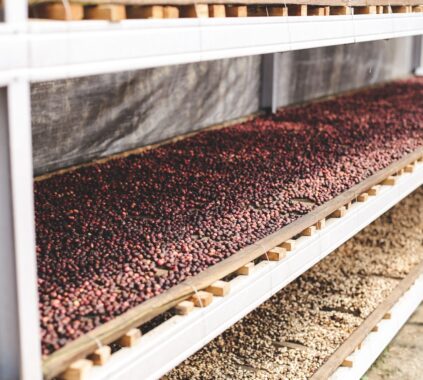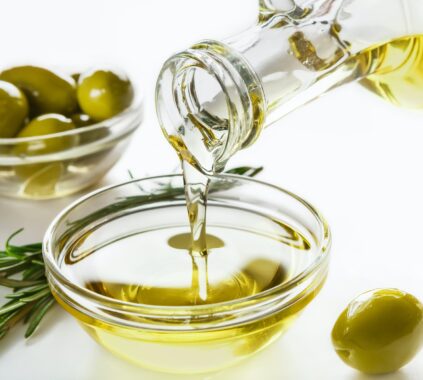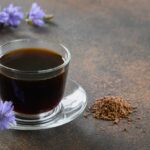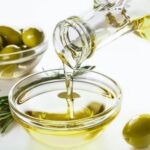Picture yourself at your favorite coffee shop, sipping on a delightful cup of java while chatting with friends. Then, out of nowhere, someone drops the “A-bomb”: acid in coffee. Suddenly, the conversation takes an unexpected turn, and everyone has an opinion. But what’s the big deal, and why are people talking about acid in coffee? Buckle up, folks; we’re about to spill the beans on this fascinating topic.
Table of Contents
A Sour Note: What’s Acid Got to Do with It?
Before we dive into the nitty-gritty, let’s clarify one thing: when we talk about acid in coffee, we’re not discussing some sinister chemical concoction. Instead, we’re referring to the naturally occurring acids found in coffee beans that contribute to their flavor profile. Acidity in coffee can be a good thing, bringing brightness, complexity, and depth to your cup. However, too much acidity might leave you with a sour taste in your mouth – quite literally.
Origin Story: The Acidic Journey
The tale of coffee acidity starts where every coffee story does – with the beans. Coffee beans are grown all around the world, from Ethiopia to Brazil, and each region boasts a unique flavor profile, largely influenced by the soil, altitude, and climate. Ethiopian beans, for example, are known for their fruity, wine-like acidity, while Colombian beans typically have a balanced, citrusy acidity.
As coffee beans are roasted, their acidity levels change. Light roasts have higher acidity, while darker roasts tend to have lower acidity. To learn more about the roasting process and how it affects acidity, check out this comprehensive guide.
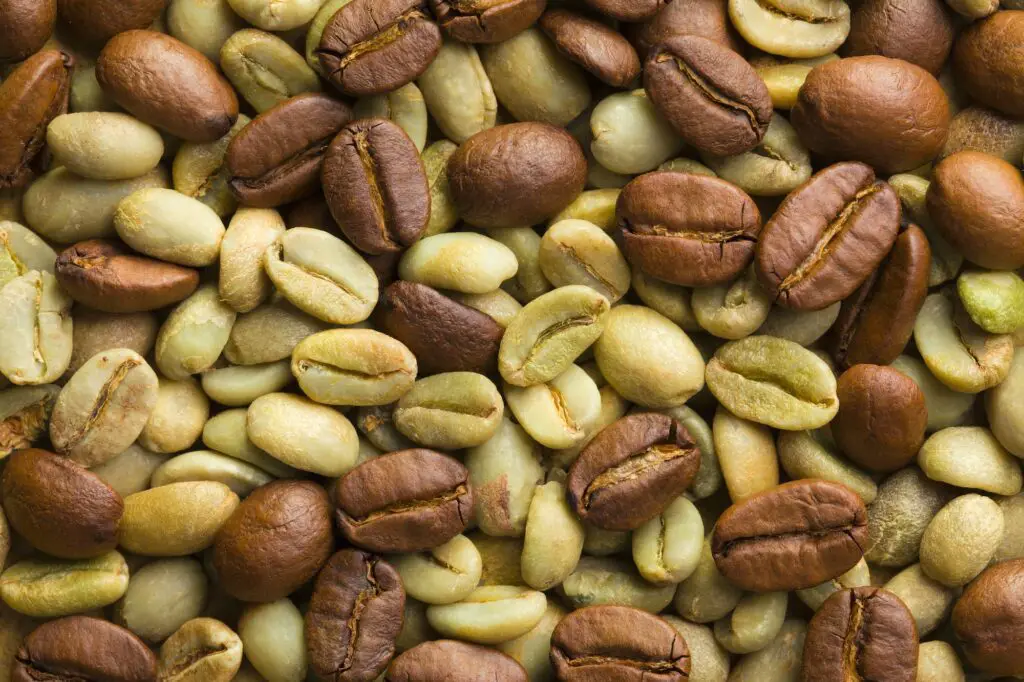
Brewing Bloopers: How Your Cuppa Joe Gets Acidy
It’s not just the beans and the roast that affect coffee acidity; your brewing method also plays a vital role. If you’re a fan of the French press, you’ll enjoy a full-bodied, less acidic brew. On the other hand, pour-over methods, like the Hario V60, tend to bring out the brighter, more acidic notes in your coffee.
Be sure to avoid common coffee brewing mistakes, such as using water that’s too hot, as this can lead to over-extraction and increased acidity. Find out more about fixing these brewing blunders here.
Pairing Perfection: Acidic Coffee’s Best Buds
So, how can you make the most of your coffee’s acidity? By pairing it with the right foods, of course! Here are some top pairings to try:
1. Fruity Ethiopian Yirgacheffe with Blueberry Muffins
The blueberry muffin’s natural sweetness complements the wine-like acidity of Ethiopian Yirgacheffe coffee, making it a match made in heaven.
2. Zesty Colombian Coffee with Lemon Poppy Seed Cake
The citrus notes in Colombian coffee pair beautifully with the lemony tang of a moist lemon poppy seed cake, creating a symphony of flavors that will dance on your taste buds.
3. Kenyan Coffee with Dark Chocolate
With its bright acidity and berry undertones, Kenyan coffee cuts through the rich, velvety goodness of dark chocolate, leaving your palate refreshed and ready for more.
Brands in the Game: Acid Masters
Wondering which brands are known for their acidic coffee offerings? Here are a few to check out:
- Stumptown Coffee Roasters: This Portland-based company is a fan favorite for their expertly roasted, single-origin beans that showcase the unique acidity of each region. Try their fruity and floral Ethiopian Guji for a delightful acidic treat.
- Counter Culture Coffee: With a commitment to sustainability and quality, Counter Culture offers a range of single-origin coffees with varying acidity levels. Their bright and juicy Hologram blend is a must-try for acidity aficionados.
- Verve Coffee Roasters: Hailing from Santa Cruz, California, this artisan coffee roaster has gained a loyal following for their commitment to high-quality, single-origin beans that emphasize the distinctive acidity of each region.
Taming the Tart: Tips for Acid-Sensitive Coffee Lovers
If your stomach is as sensitive to acid as a soufflé to a slamming door, don’t despair – there are ways to enjoy coffee without feeling the burn. Here are some helpful tips:
- Opt for darker roasts: As mentioned earlier, darker roasts tend to have lower acidity. Look for French or Italian roasts, or blends specifically crafted for low acidity, like Café du Monde’s Coffee & Chicory.
- Cold brew your way to smoothness: Cold brew coffee has gained popularity for its smooth, low-acid profile. Not only does it taste delicious, but it’s also gentle on sensitive stomachs. Learn how to make it here.
- Pair wisely: Enjoy your coffee with alkaline foods like bananas or yogurt to help neutralize the acidity.
- Slow and steady: Sip your coffee slowly and avoid chugging it down, as this can help minimize the impact of acidity on your stomach.
- Mind your brewing: As we’ve mentioned before, brewing methods can influence acidity. French press or AeroPress methods can produce less acidic coffee compared to pour-over methods.
Embrace the Acid Trip
So, why do people talk about acid in coffee? Because it’s an essential part of the coffee experience! Acidity brings brightness and complexity to your cup, while also reflecting the unique characteristics of the beans and their origins. By exploring different roasts, brewing methods, and pairings, you can find your perfect balance of acidity and flavor. And if you’re acid-sensitive, there are still plenty of ways to enjoy coffee without sacrificing taste or comfort.
Now that you’re an acidity expert, go forth and spread the word – or better yet, share a delicious, acidic cup of coffee with friends and let the conversation flow. Cheers!

Frequently Asked Questions: Acid in Coffee
1. What does acidity in coffee mean?
Acidity in coffee refers to the bright, tangy, or sour flavors that contribute to the overall taste profile of a cup of coffee. It’s a natural characteristic of coffee beans, influenced by factors such as bean origin, roast level, and brewing method. Acidity is not a negative attribute; in fact, it adds complexity and depth to your coffee.
2. Does acidity in coffee cause heartburn or acid reflux?
Acidity in coffee can potentially trigger heartburn or acid reflux in some individuals, especially those who are already prone to these conditions. If you find that coffee exacerbates your symptoms, consider trying low-acid coffee options, such as darker roasts or cold brew.
3. How can I reduce the acidity of my coffee?
To reduce acidity in your coffee, you can:
- Opt for darker roasted beans
- Use a brewing method that yields a less acidic cup, such as French press or AeroPress
- Cold brew your coffee
- Pair your coffee with alkaline foods to neutralize acidity
4. Are certain types of coffee beans less acidic than others?
Yes, some coffee beans are naturally less acidic than others. For example, beans from Brazil, Sumatra, and Indonesia tend to have lower acidity compared to Ethiopian or Kenyan beans. Additionally, beans grown at lower altitudes usually have lower acidity levels.
5. How does the roast level affect coffee acidity?
As coffee beans are roasted, their acidity levels change. Light roasts have higher acidity, while darker roasts tend to have lower acidity. If you prefer a less acidic cup of coffee, opt for darker roasts, such as French or Italian roasts.
6. Can I still enjoy coffee if I’m sensitive to acid?
Absolutely! If you’re sensitive to acid, consider trying low-acid coffee options, such as darker roasts, cold brew, or blends specifically crafted for low acidity. Additionally, experiment with different brewing methods, like French press or AeroPress, which can produce a less acidic cup.
Daily Demitasse is a participant in the Amazon Services LLC Associates Program, an affiliate advertising program designed to provide a means for sites to earn advertising fees by advertising and linking to Amazon.com. We also participate in other affiliate programs which compensate us for referring traffic.




